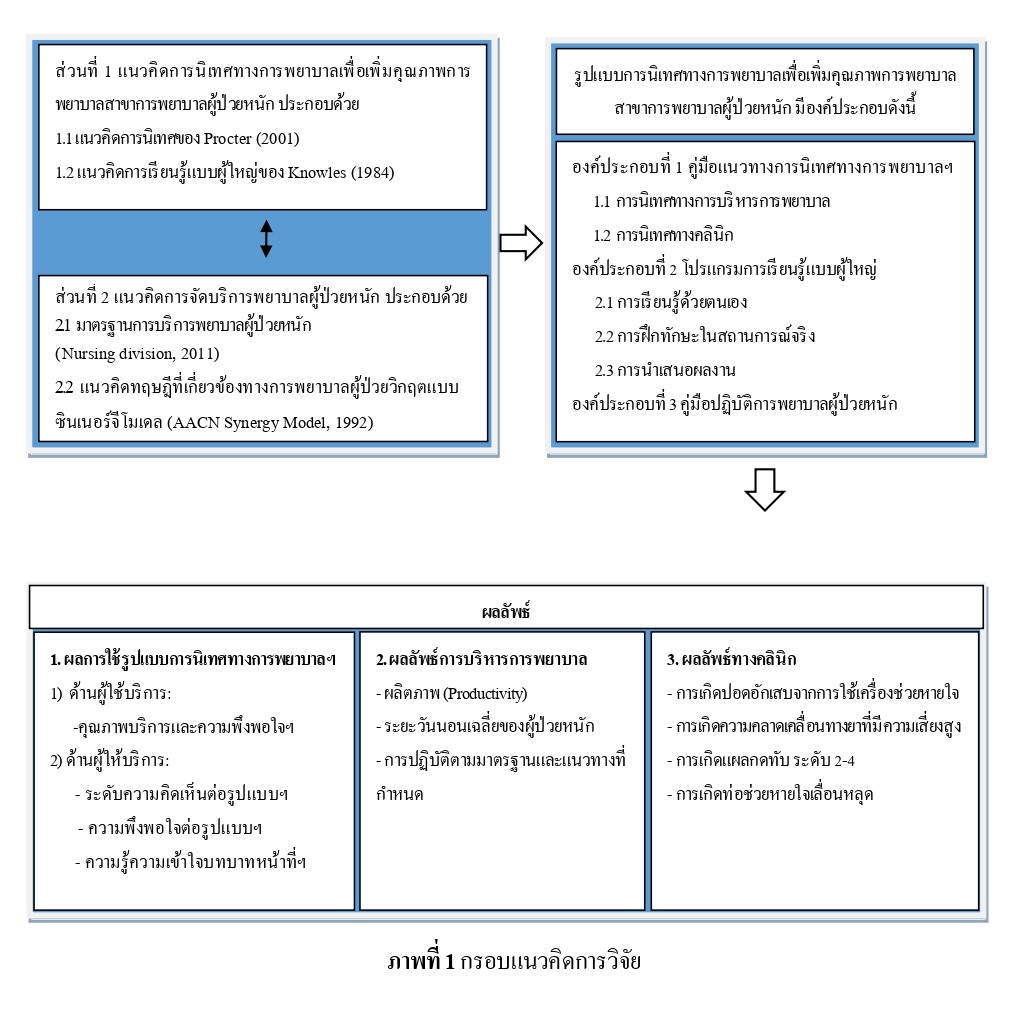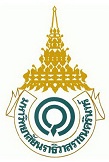The Development of A Nursing Supervision Model to Improve the Quality of Nursing in Critical Care
Keywords:
A nursing supervision, Quality of nursing, Nursing in critical careAbstract
This research and development aimed to develop a nursing supervision model to improve the quality of nursing in critical care and assess the outcomes of utilizing the model. Samples were 90 participants including the head nurse, the vice head nurse, and nurses with experience caring for critically ill patients and 100 clients who used Saun Hospital's services. There were three phases of the research methodology: 1) Study nurse supervision issues; 2) Create a model for nursing supervision; and 3) Test and assess the results of using a model. The following were the research tools: 1) three parts of a nursing supervision model that the researcher developed, including the manual guidelines of a nursing supervision model, the adult learning program, and the practicum manual of critical care;
2) questionnaires that the researchers developed were validated by three experts with indexes equaled to 0.93, 0.93, 0.95, 0.8, and 0.7 and relied values equaled to 0.96, 0.96, 0.93, 0.93, and 0.93. The findings showed that: 1) the average scores of service quality and client satisfaction were at a high level; 2) the average scores of client opinion and contentment with a nursing supervision model were at a high level. The average knowledge score was statistically significantly higher after using the model than it was before; 3) nursing administration outcomes, nursing quality, sleep duration, and guideline practice after using the model were all equaled with the clinical outcomes standard after using the model. The prevalence of ventilator-associated pneumonia, high-risk medication errors, pressure sores, and fewer unplanned extubation.
References
AACN Synergy Model. (1992). The AACN Synergy Model for patient care. www.certcorp.org/ certcorp/certcorp.nsf/vwdoc/ SynModel.
Boonmee, L., Pitaksin, D., Choomee, P., & Tiyawisutsri, C. (2018). Development of Professional Nurses' Competence into Nursing Case Managers using the Framework of Advanced Nursing Practitioners and Adult Learning Theory. The Journal of Prapokklao Hospital Clinical Medical Education Center, 35(1), 93 - 102. http://he02.tci-thaijo.org/article/download /PDF.
Juntachum, W., Volrathongchai, K., Srijakkot, J., Boonsawasdgulcha, P., Jumpamool, A., Sirimontri, J., Dapha, S., & Sookpier, P. (2023). Relationship Model between Clinical Supervision and Nursing Outcomes in Intensive Care Units at Tertiary Care Hospitals in the Northeast of Thailand: A Structural Equation Model Analysis. Journal of Sakon Nakhon Hospital, 26(1), 115 - 125. https://he05.tci-thaijo.org/index.php/JSakonNakHosp/article/view/2777.
Juytay, U., Rattanawimol, C., Bunyamani, W., & Wongjantharamanee, S. (2023). The Development of nursing supervision program model of the first level administration in Sukhothai hospital base on 2P Safety. Research and development health system journal. 16(2), 202 - 215. https://li01.tci-thaijo.org/index.php/pnujr/article/view/249386
Khunpakdee, R., & Tuampetch, D. (2024). Development of Clinical Supervision Model among Mechanically Ventilated Patients in Medical Intensive Care Unit, Hatyai Hospital. Nursing Division Journal, 51(1), 18 - 34. https://he01.tci-thaijo.org/index.php/JND/article/view/270348
Knowles, M.S. (1984). Self - directed learning: A neglected species (3rd ed.). Gulf Publishing.
Muenna, T. (2022). Development of Nursing Supervision Model at Pakkhad Hospital, Bueng Kan Province. Journal of Sakon Nakorn Hospital, 25(1), 22 - 33. https://he05.tci-thaijo.org/index. php/JSakonNakHosp/article/view/2661
Natee, S. (2023). The Development of Participatory Clinical Supervision Model of Critically Emergency Nursing Care, Accident and Emergency Department, UdonThani Hospital. Udonthani Hospital Medical Journal, 30(2), 292 - 304. https://he02.tci-thaijo.org/index.php/ udhhosmj/article/view/259151/176789.
Nursing division. (2011). Nursing quality assurance: evaluating the quality of intensive care nursing services. Samjareonpanich.
Proctor, B. (2001). Training for the supervision alliance attitude, skills and intention in fundamental themes in clinical supervision. Routledge.
Ruangwattana, S., Kaewkhumpa, P., & Thummapok, O. (2024). The development of nursing supervision program model for the first-line manager basedtowards patient safety in the intensive care nursing department, Lamphun Hospital. Journal of Nakornping Hospital, 15(1), 108 – 124. https://he01.tci-thaijo.org/index.php/jnkp/article/view/266955
Sirimontri, J., & Juntachum, W. (2021). Causal relationship models between clinical supervision, clinical risk management and nursing outcome perceived by registered nurses in Intensive Care Units, Tertiary Care Hospitals, Northeastern Thailand. Journal of Sakon Nakorn Hospital, 24 (2), 1 - 12. https://thaidj.org/index.php/jsnh/article/view/PDF.
Tangwongkit, T., Kerdmuang, S., Chaiyasak, M., Weerawatthanodom, N., & Pungpotong, S. (2020). Effects of Participatory Nursing Supervision Program on the Quality of Supervision of Head Nurses in General Hospital, Chainat Province. Nursing Journal of the Ministry of Public Health, 30(2), 190 - 202. https://he02.tci-thaijo.org/index.php/tnaph/article/view/244947.

Downloads
Published
How to Cite
Issue
Section
License
Copyright (c) 2025 Princess of Naradhiwas University Journal

This work is licensed under a Creative Commons Attribution-NonCommercial-NoDerivatives 4.0 International License.



